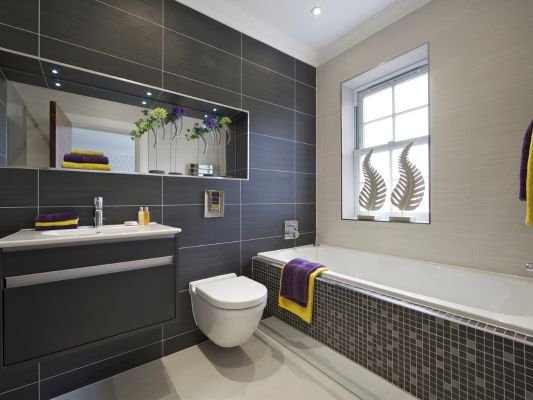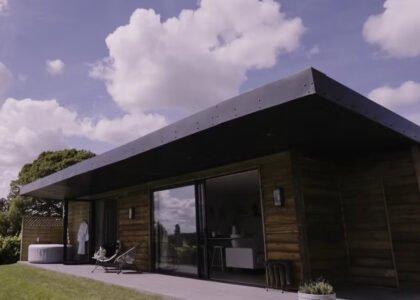Waterproofing your bathroom tiles isn’t just a suggestion—it’s a necessity, especially in a region like Perth where hot summers and occasional humidity can test the durability of any bathroom installation. Whether you’re renovating an old bathroom or tiling a new one, ensuring proper waterproofing helps you avoid long-term issues like water seepage, mould, tile damage, and structural decay.
In this guide, we’ll walk you through the essential steps and tips to waterproof your bathroom tiles effectively—backed by experience in Perth’s specific climate conditions.
Why Waterproofing Is Essential in Perth Bathrooms
Perth’s unique weather patterns—hot, dry summers followed by bursts of rain and humidity—can create the perfect environment for moisture build-up, especially in bathrooms. Without proper waterproofing:
-
Water may seep behind wall or floor tiles.
-
Mould and mildew can develop.
-
Structural damage might occur over time.
-
Tiles may loosen or crack prematurely.
Professional bathroom tiling and tiling services in Perth now focus heavily on smart waterproofing methods to counter these challenges and extend the life of your tiled surfaces.
Step-by-Step: How to Waterproof Bathroom Tiles in Perth
1. Surface Preparation
Before waterproofing, all surfaces must be dry, clean, and free from dust or debris. Any previous coatings or sealants should be removed. If you’re dealing with tile restoration or tile resurfacing, it’s important to strip back to the original layer.
2. Choosing the Right Waterproofing Membrane
There are two main types:
-
Liquid Membranes (painted or rolled on)
-
Sheet Membranes (pre-formed layers)
In Perth, liquid membranes are more commonly used because they adapt well to irregular surfaces and temperature changes. These should be applied in multiple coats, especially in bathroom tiling zones like showers, around bathtubs, and near vanity walls.
3. Waterproofing Key Areas
Focus on:
-
Floor and wall junctions
-
Behind shower walls
-
Around drainage points
-
Any area below or near plumbing fixtures
Using flexible sealants around expansion joints and floor edges ensures better long-term performance.
Grouting and Sealing: Your Second Line of Defence
Even if you waterproof beneath the tiles, your grout and sealants are critical. Poor grouting can become the weakest link. Make sure:
-
Grout is applied correctly, filling all gaps completely.
-
A quality sealer is used once the grout has dried (typically 72 hours after application).
-
You consider tile grouting and regrouting services every few years to maintain effectiveness.
Many Perth homes require tile grouting maintenance every 3-5 years due to climate-driven wear and tear.
Best Materials for Waterproofing Bathroom Tiles
To tackle Perth’s conditions, opt for:
-
Porcelain or glazed ceramic tiles – These absorb less moisture.
-
Epoxy grout – Offers superior resistance to water and staining.
-
Silicone-based sealants – Excellent for areas prone to movement.
Additionally, choosing tiling services in Perth familiar with the local environment ensures proper material selection and application.
Common Mistakes to Avoid
-
Skipping surface priming: Always prime before applying membranes.
-
Overlooking corners and joints: These are high-risk areas for water seepage.
-
Improper tile slope: Especially on shower floors, poor slope leads to standing water.
-
Rushing the drying process: Each layer of waterproofing should cure properly before tile installation begins.
Long-Term Waterproofing Maintenance Tips
Waterproofing isn’t a one-time task. To ensure longevity:
-
Reseal grout and tiles every few years.
-
Inspect your bathroom for cracks or water stains.
-
Clean tiles regularly using non-acidic cleaners.
-
Schedule professional tile repairs at the first sign of leaks or tile movement.
You can also look into tile replacement and restoration if the existing tiles are beyond repair or no longer maintain watertight integrity.
Integrating Waterproofing in New Builds or Renovations
If you’re working with a builder or planning a new bathroom:
-
Ensure that bathroom tiling professionals follow the AS3740 waterproofing standards.
-
Use local experts for tiling services in Perth who understand how weather and water behave in your area.
-
Combine waterproofing with overall tiling planning, including tile resurfacing, slope calculations, and wall protection.
Final Thoughts
Waterproofing bathroom tiles may seem like a behind-the-scenes process, but in Perth’s climate, it can make the difference between a long-lasting bathroom and costly repairs. From selecting quality membranes to grouting, sealing, and long-term upkeep, a well-waterproofed bathroom enhances durability, hygiene, and peace of mind.
Whether you’re planning a full renovation or simply looking to fix moisture issues, investing in proper waterproofing and tiling services in Perth is one of the smartest choices you can make for your home.
FAQs
Q1. How often should bathroom tile grout be resealed in Perth?
Every 2–4 years, depending on usage, humidity, and cleaning habits.
Q2. Can I waterproof over existing tiles?
In some cases, yes—with proper cleaning and priming. However, tile replacement or restoration may be needed if tiles are damaged or loose.
Q3. Is DIY bathroom waterproofing effective in Perth?
DIY is possible but risky. Hiring professionals in bathroom tiling ensures that waterproofing meets Australian standards.






